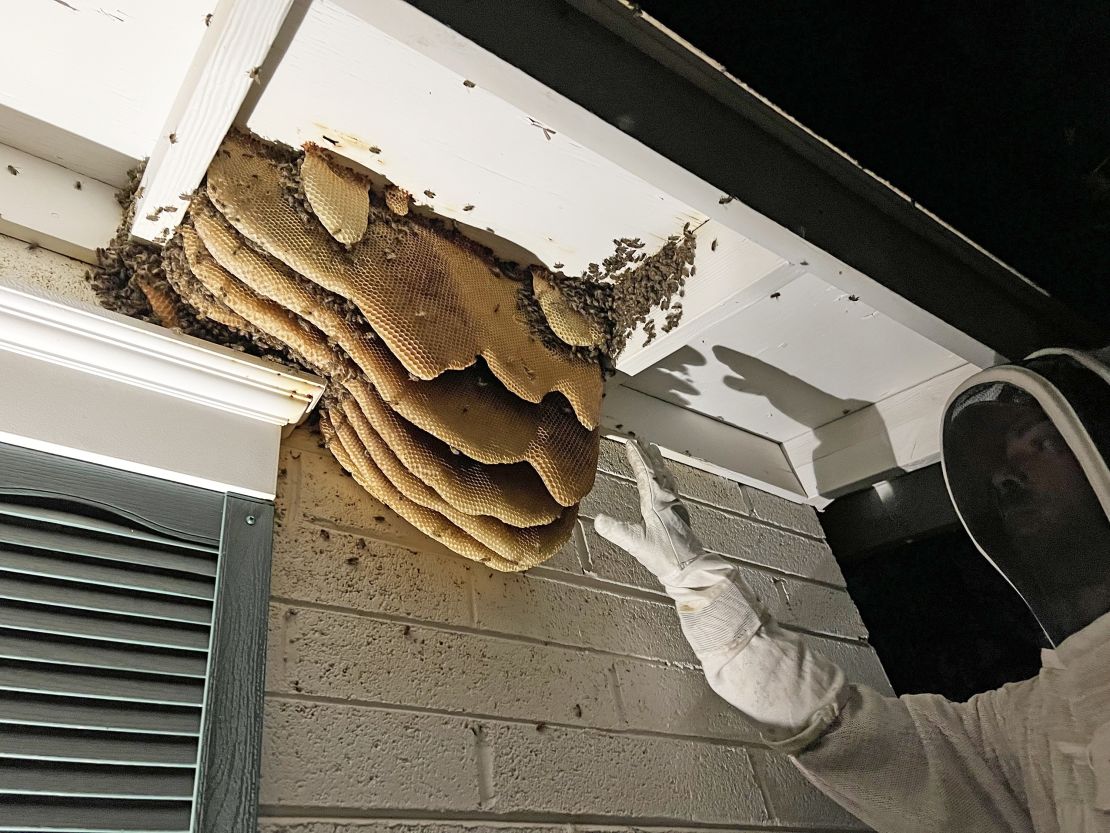As deadly, unrelenting heat scorches Arizona, some entomologists are growing concerned about the increasing number of dead honeybees – a species vital to our ecosystem, especially food production.
Temperatures in Phoenix hit 110-plus degrees for a record-breaking 31 consecutive days from June 30 to July 30, part of what was the hottest month on record for any US city.
This unprecedented heat has bee experts across Arizona sounding the alarm bell.
“It’s a very major concern,” Shaku Nair, an entomologist with the University of Arizona, told CNN, “Honeybees can forage up to 113 degrees. As of July, we’ve had many days over 113 degrees, so bees are taking a bad hit right now.”
Phoenix-based beekeeper Cricket Aldridge, who now spends many of her days saving bees from the heat, told CNN “bees’ homes are being melted” and “other bee colonies are attacking honeybee colonies due to food scarcity.”
According to Dan Winter, President of the American Beekeeping Federation, it requires very extreme heat and no water for beehives to melt because they use evaporation to cool down.
Arizona honeybees battle the relentless heat by using water and their wings to cool down the hive, Nair explained, and to keep the brood alive, they must maintain a hive temperature between 92 and 104 degrees. However, with temperatures so high, there’s only so much they can do.
“We are seeing dead bees around hives,” Nair says, “That is because of the heat – it’s too hot in the hives and bees won’t let[other bees] back in.”

When honeybees leave the hive to forage for food, options are scarce, according to Nair. Weeks of nonstop heat in Phoenix have wilted flowers and killed saguaro cactuses, important food sources for honeybees.
Nair warns that humans could see the impacts of more dead honeybees for many years to come, and a drop in pollination could lead to a disruption in food production. Foods like melons, citrus fruits, zucchini, coffee and chocolate all depend on bees.
Unfortunately, heat is just another added stress on honeybee populations that are already in danger. Last year, beekeepers in the US lost an estimated 48% of their managed honeybee colonies, according to Beeinformed.org.
Winter said bee populations are on the decline due to rising threats from pests and threats to their nutrition and habitat. Winter told CNN that humans have put bee habitats in jeopardy with monoculture, which “is a big problem because it doesn’t leave a lot of nutrition for bees.”
Bee experts have a message for regions dealing with extreme heat – put out water for bees and maintain more native plant species. “Bees usually do well as long as they have water,” Winter said.





